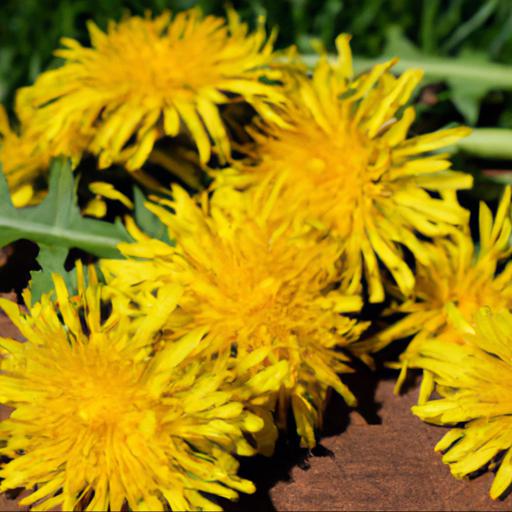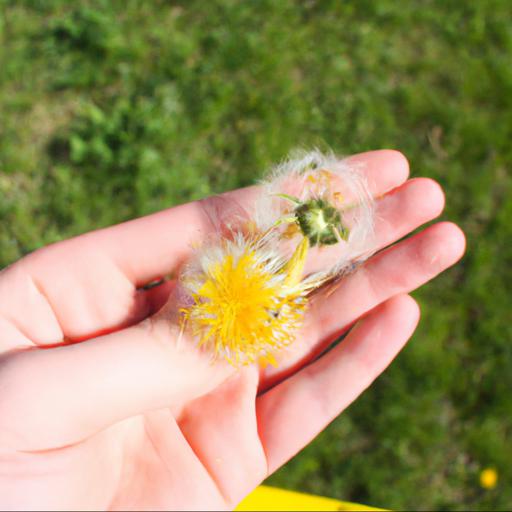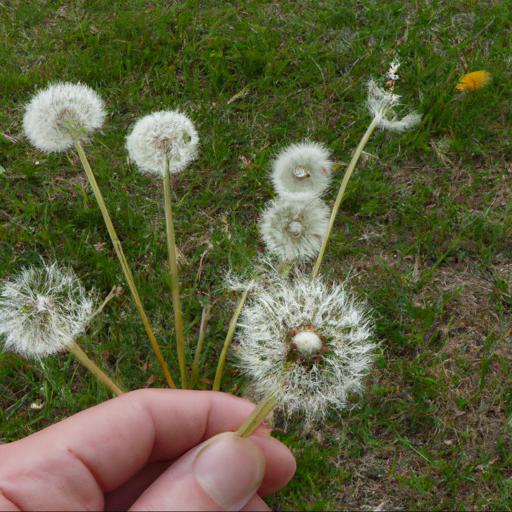Taraxacum officinale, commonly known as dandelion, is a widely distributed flowering plant in the family Asteraceae. This herbaceous perennial is native to Europe, Asia, and North America, and is a common sight in lawns and gardens. Dandelion has a long history of medicinal use and is a rich source of vitamins and minerals.
In this blog, we will explore the health benefits of Taraxacum officinale and discuss how it can be used to improve your overall health. We will also look at the side effects and potential risks associated with consuming dandelion.
Health benefits of taraxacum officinale

Taraxacum officinale, otherwise known as a dandelion, is a common flowering plant found throughout the UK. It’s a popular gardener’s weed and can be a bit of a nuisance in lawns, but it has many beneficial uses.
These range from medicinal effects to enhancing the flavor of a variety of dishes. With its bright yellow petals and fuzzy leaves, it adds a splash of color to any garden. Read on to learn more about the amazing health benefits of taraxacum officinale.
One of the biggest health benefits of taraxacum officinale is its antioxidant-rich compounds, which help fight inflammation and protect against damaging free radicals. These compounds are contained in the tiny leaves, stems, and flowers of the dandelion plant.
In fact, taraxacum officinale is one of the most effective natural sources of antioxidants, and it’s even been suggested that the plant has anti-cancer properties. For medicinal purposes, the leaves and flowers of taraxacum officinale have been used for centuries to alleviate digestive issues and support liver health. The diuretic properties of the plant are especially useful for people with high blood pressure and water retention, as it helps to flush excess fluids from the body.
Furthermore, dandelion leaves are rich in potassium, making them a great natural source of hydration. Not only is taraxacum officinale good for your health, but it can also be used to add flavor to a variety of dishes and beverages. The flowers can be steeped in hot water to make a soothing herbal tea, while the leaves can be added to salads or cooked like spinach to enrich their flavor.
In addition, the root of the plant can be ground up and used as a natural coffee substitute. Taraxacum officinale is also a popular ingredient in a variety of liqueurs and beers.
As you can see, taraxacum officinale offers a range of health benefits, from reducing inflammation and protecting against disease to adding flavor to food and drinks. With its bright yellow petals, fuzzy leaves, and sweet-tart aroma, this delightful dandelion is a great addition to any garden.
How to use taraxacum officinale

Taraxacum officinale, commonly known as the dandelion, is a perennial flowering plant native to many parts of the world including Europe, Asia and North America. The plant is easily identified by its bright yellow flowers, jagged-edged leaves and deep taproots.
This plant has been used for centuries for both its culinary and medicinal properties, and has been popular in backyard gardens for generations. Taraxacum officinale is a hardy, low-maintenance plant. It tolerates a wide range of conditions and will often grow in areas of poor soil and suboptimal conditions.
When grown in a garden, it requires full sun and an area with adequate drainage. To maximize their yield of flowers and leaves, dandelions should be planted in a sunny spot and watered regularly.
In many parts of the world, dandelions are a common sight in lawns and parks. Once established, the dandelion produces both green leaves and bright yellow flowers throughout the spring and summer. The leaves are most popular as food, being commonly used in salads and as a green vegetable.
The leaves are rich in fiber, vitamins and minerals, and make an enjoyable side dish when served as boiled greens. The flowers are also edible, containing a number of medicinal properties.
The roasted flower heads can be used as a coffee substitute, while the extracted sap can be made into tonics and teas. In both traditional and modern medicine, Taraxacum officinale is widely used as a remedy for a number of health conditions. The popularity of Taraxacum officinale is ever increasing.
Not only is it a staple in many home gardens around the world, but it is also widely used as an herbal remedy for a number of health issues. Whether you are looking for an easy to maintain garden plant, a delicious and healthful side dish, or a medicinal remedy, the dandelion will not disappoint.
Potential side effects of taraxacum officinale

As a UK garden expert, Taraxacum officinale, commonly known as dandelion, is one of the most common yet important plants to be found in a UK garden. Dandelions are bright, yellow-flowered perennials that look great when in full bloom.
Aside from its aesthetic appeal, dandelions are packed full of nutrients and offer many health benefits. But as with any herb, there are potential side effects of taraxacum officinale that should be considered before anything else. When consumed, taraxacum officinale can have powerful laxative effects, which is why it is often used as a treatment for constipation.
While this is generally considered a positive effect, it can actually be too powerful for some people, which can lead to uncomfortable diarrhea. The same goes for skin applications, which should be limited as excessive exposure can have an irritant and/or skin-sensitizing effect in some people. Taraxacum officinale has also been known to interfere with certain medications, although the details of this vary from person to person.
For example, it can increase the potency of diuretics, and should therefore be avoided by those taking such medications. Additionally, those taking blood thinners should talk to their doctor before consuming dandelions, as it can slow the rate at which blood clots.
In conclusion, Taraxacum officinale can produce some truly amazing health benefits when used responsibly, but there are potential side effects of taraxacum officinale to consider before using it. People with existing medical conditions and those taking certain medications should discuss with their doctor before attempting to consume any form of taraxacum officinale.
Once you’re sure that it won’t interfere with other treatments, then you can enjoy the fantastic benefits of this attractive garden staple.
Our video recommendation
Final Touch
Taraxacum officinale, commonly known as dandelion, is a flowering plant native to Europe and Asia. It is a hardy perennial that can be found in many gardens and lawns. Dandelion has a wide variety of medicinal uses, ranging from digestive aid to diuretic.
It is also a rich source of vitamins and minerals. Dandelion is a versatile plant that can be eaten raw, cooked, or brewed into a tea.
It is a great addition to any garden and can provide many health benefits.
FAQ
What are the medicinal benefits of Taraxacum officinale?
Taraxacum officinale, commonly known as dandelion, has a range of medicinal benefits. It is a natural diuretic, helping to flush toxins from the body, and is also a powerful antioxidant. It can help to reduce inflammation, improve digestion, and reduce cholesterol levels. It is also used to treat skin conditions, such as acne and eczema, and can be used as a natural remedy for fever, colds, and flu.
What parts of Taraxacum officinale are used for medicinal purposes?
The leaves, flowers, and roots of Taraxacum officinale are all used for medicinal purposes.
How is Taraxacum officinale used in traditional medicine?
Taraxacum officinale is used in traditional medicine as a diuretic, laxative, and appetite stimulant. It is also used to treat liver and gallbladder problems, skin disorders, and digestive issues.
What are the potential side effects of using Taraxacum officinale?
The potential side effects of using Taraxacum officinale include nausea, vomiting, diarrhea, abdominal pain, and allergic reactions. It can also interact with certain medications, so it is important to consult with a doctor before taking it.
How is Taraxacum officinale prepared for medicinal use?
Taraxacum officinale is prepared for medicinal use by harvesting the plant’s leaves and roots, drying them, and then grinding them into a powder. The powder can then be used to make teas, tinctures, and capsules.
What are the active ingredients in Taraxacum officinale?
The active ingredients in Taraxacum officinale are sesquiterpene lactones, flavonoids, triterpenes, and phenolic acids.

